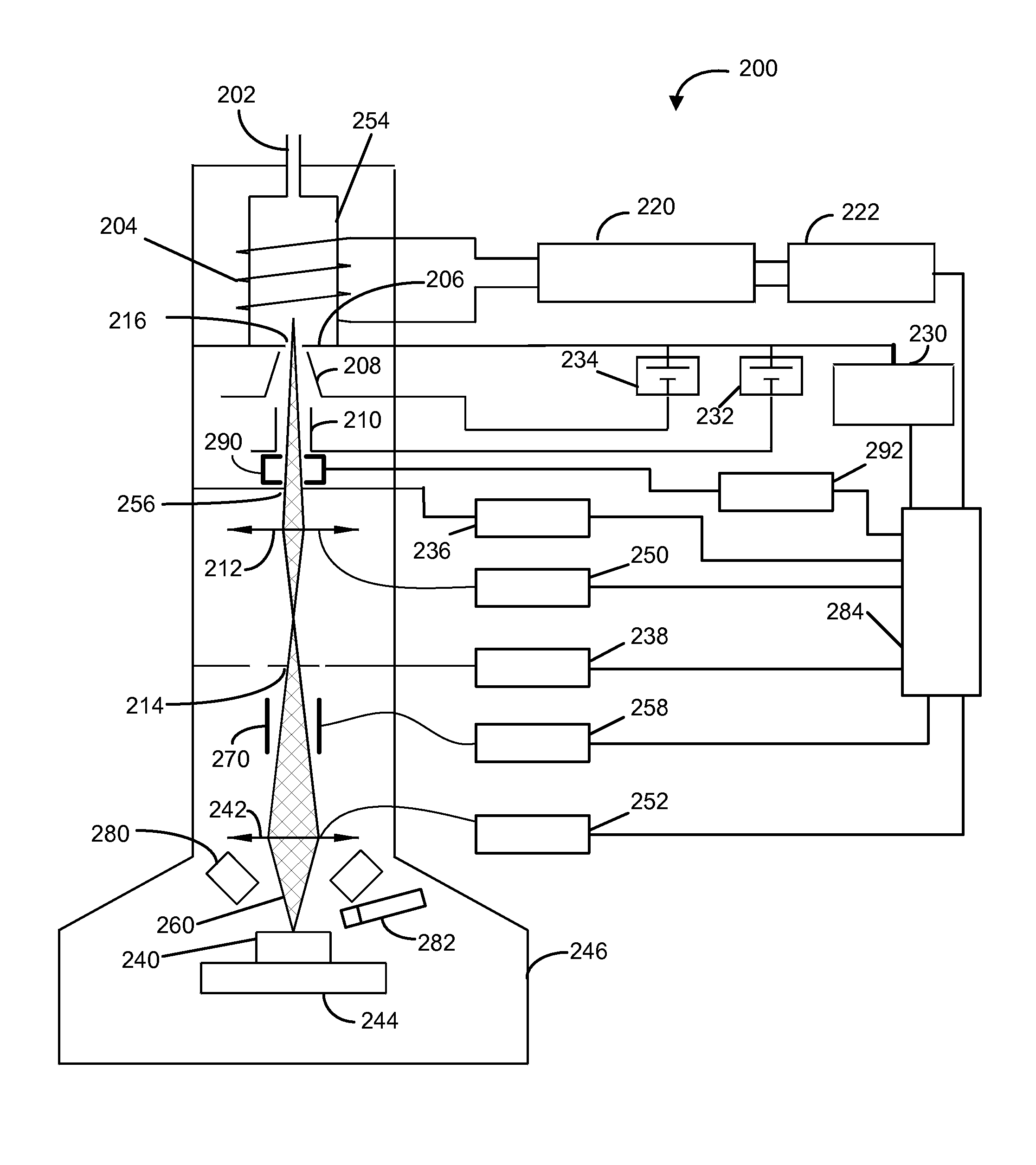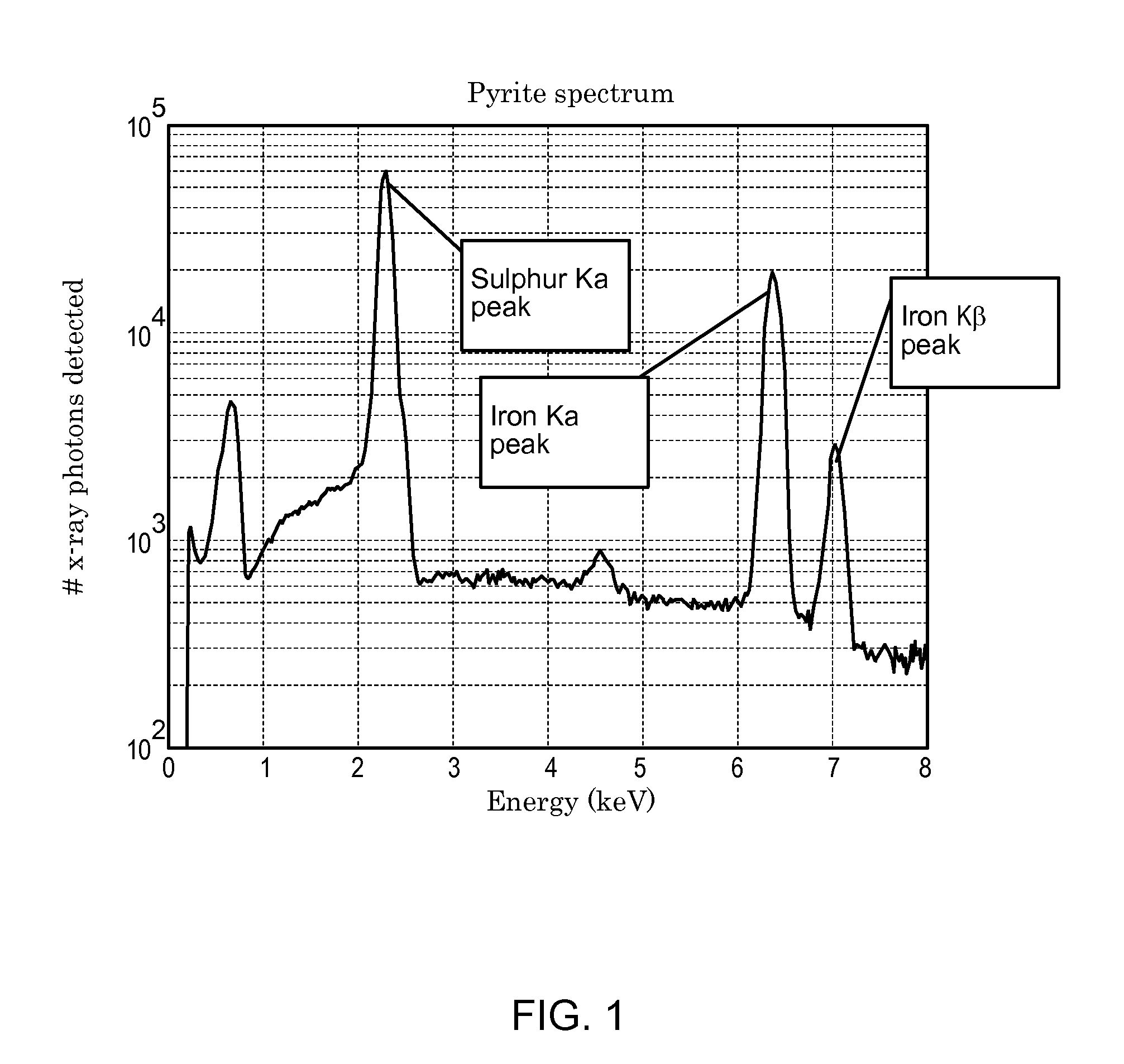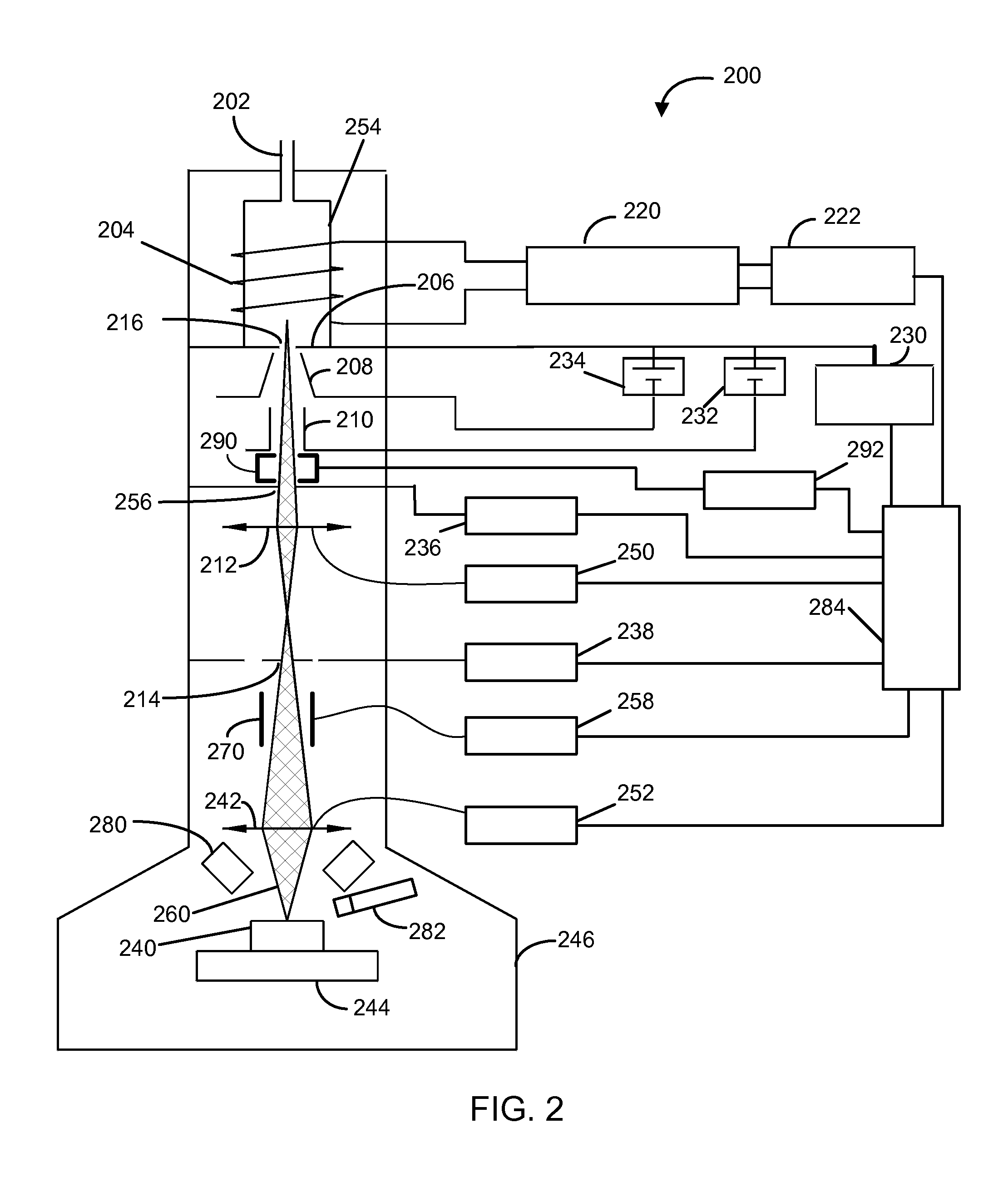Inductively coupled plasma source as an electron beam source for spectroscopic analysis
a plasma source and electron beam technology, applied in the field of inductively coupled plasma sources, can solve the problems of limiting the beam current to a low beam current at high resolution, consuming up to 30 minutes or more, and user facing a lengthy process
- Summary
- Abstract
- Description
- Claims
- Application Information
AI Technical Summary
Benefits of technology
Problems solved by technology
Method used
Image
Examples
Embodiment Construction
[0021]While it is known that the resolution of an electron beam from a plasma electron source is poorer than the resolution of an electron beam from a thermionic or field emission source, applicants have recognized that beam resolution is not the limiting factor in many applications, such as EDS. In scanning electron microscopy, secondary electrons used to form the image come from a relatively small interaction volume around the impact point of the primary beam. As the beam electrons penetrate beneath the sample surface, they are scattered randomly away from the beam's point of impact. Only secondary electrons generated near the top surface are capable of escaping and being detected, and those secondary electron typically come from close to the point of impact of the primary beam. X-rays, on the other hand, can escape from a much greater depth and so detectable x-rays continue to be generated as the electron moves downwards and is scattered sideways. Thus, the “interaction volume,” ...
PUM
 Login to View More
Login to View More Abstract
Description
Claims
Application Information
 Login to View More
Login to View More - R&D
- Intellectual Property
- Life Sciences
- Materials
- Tech Scout
- Unparalleled Data Quality
- Higher Quality Content
- 60% Fewer Hallucinations
Browse by: Latest US Patents, China's latest patents, Technical Efficacy Thesaurus, Application Domain, Technology Topic, Popular Technical Reports.
© 2025 PatSnap. All rights reserved.Legal|Privacy policy|Modern Slavery Act Transparency Statement|Sitemap|About US| Contact US: help@patsnap.com



